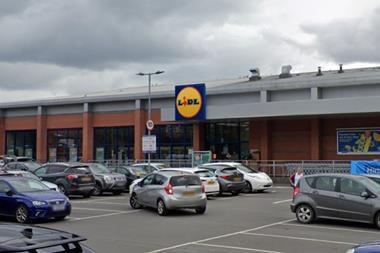It was clear from the Black Friday sales in November that Christmas 2015 was going to be tough for retailers, and so it has proved.

Shoppers hunted for bargains online instead of on the high street on Black Friday, leaving stores empty and stockrooms full of unsold products. This trend continued throughout December, with the problem exacerbated for clothing retailers by the milder-than-average weather, which dampened the demand for a winter coat or jumper.
The results of the bleak midwinter are now being laid out in what has been an extraordinary start to 2016 for the retail industry. In the first two weeks of the year, we have already had a string of profit warnings, with Sainsbury’s announcing it wants to buy Home Retail Group and Marc Bolland announcing his departure as chief executive of Marks & Spencer.
The news from Sainsbury’s and M&S will shape the debate in the sector about how traditional retailers respond to the change in shopping habits that characterised the festive period. For both companies, dealing with their property is the key.
Sainsbury’s has identified 1.5m sq ft of supermarket space across the UK - which represents 6% of its estate - that it no longer needs for food as customers switch spending to convenience stores, the discounters and online. Its bosses want Argos, which is owned by Home Retail, to help fill this.
By installing Argos concessions in supermarkets, Sainsbury’s can close the 245 Argos stores that are within half a mile of at least one of its sites. More than half of the leases on Argos stores will either expire or reach a break clause in the next five years, so this will be a fairly straightforward task.
Forget Argos’s modern delivery network; the cost savings that can be delivered from this consolidation of property are the pivotal plank of the Sainsbury’s argument to shareholders about why they should support a deal.
At M&S, the main challenge facing new boss Steve Rowe is also property. He must deal with the 132-year-old company’s bloated and outdated estate.
M&S simply has too many stores and they are too big. Its problems in non-food - which led like-for-like general merchandise sales to slump by 5.8% in the run-up to Christmas - can be traced back to the problems with its store estate.
The company has 874 shops in the UK and 16.8m sq ft of selling space. Of these stores, 341 sell clothing, while the rest are Simply Food stores. In contrast, the John Lewis Partnership has just 392 stores, 346 of which are Waitrose stores, and 46 John Lewis department stores, while Next has 539 shops across 7.3m sq ft.
Any clothing retailer would struggle to look impressive across four floors of space dedicated to its own products in stores located in every corner of the country. The size of M&S stores means the company cannot focus customers on the strongest garments in its range, while the number of M&S stores is diluting the benefits of its fast-growing online business.
In pre-internet days, the size and number of M&S stores was a competitive advantage. It was always there and always had what you needed.
Retail used to be all about scale. The more stores you had, the larger your revenues. The larger your revenues, the more buying power you had with suppliers. The more buying power you had, the cheaper your prices. It was a virtuous circle.
However, any retailer can now reach a shopper through the smartphone in their pocket, and M&S finds itself under attack from all angles as a result.
Time to be bold
Rowe has been at M&S for 26 years, spending the past six months as the head of general merchandise. Whether an insider is the best man to start shutting shops is open to debate. Closing an M&S does not go unnoticed in a town. When the company announced the closure of nine stores last year, putting hundreds of jobs at risk, it was criticised by local communities and MPs.
However, Rowe appears to recognise what needs to be done. As the head of general merchandise, he lined up eight stores where the space dedicated to fashion will shrink in favour of a bigger food hall.
The blueprint for M&S should be its overseas business. M&S’s flagship store on the Champs-Élysées in Paris covers 14,000 sq ft, less than half the size of the average M&S in the UK. As a result, only the best of its clothing range is on show.
Bolland said three years ago that M&S would not open any more space for clothing in the UK from 2016, calling M&S.com “our new flagship store”. However, he never fully grasped the nettle by closing swathes of stores. Rowe must be bold and go much further.
Graham Ruddick is senior business reporter at The Guardian





























No comments yet